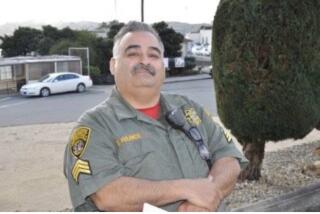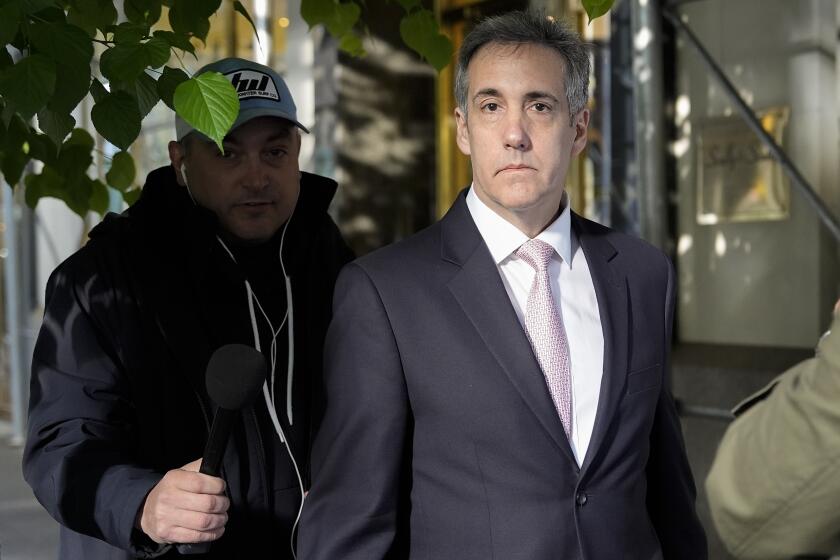Press’ Report Card on Scandal Is Hardly Honor-Roll Caliber
As members of the press corps gathered this week to rehash their coverage of the current White House scandal, some noted that it was the 25th anniversary of the infamous “Saturday night massacre” during the Watergate crisis.
Comparisons between then and now proved inevitable: Members of a blue-ribbon panel recalled how NBC-TV’s White House reporter, Tom Brokaw, had calmly and dispassionately told the nation on Oct. 20, 1973, that President Nixon had fired Archibald Cox, the independent counsel investigating him. “It was very steady, disciplined coverage,” said James Doyle, special assistant to the independent counsels on Watergate.
If he sounded wistful, the audience understood. Indeed, many journalists ache with nostalgia for a time when they commanded more respect--and spoke with credibility.
Although large numbers of Americans today question the media’s truthfulness, it might surprise some to learn that print and electronic journalists are champions at hand-wringing and self-examination. Whether they do anything about the problems they unearth, however, is a completely different matter.
This week’s gathering, sponsored by the Committee of Concerned Journalists, was a good example. The meeting was called to unveil the results of a study probing coverage of the President Clinton-Monica S. Lewinsky scandal. And the conclusions, though not surprising, were sobering--especially as they involved the media’s relationship with independent counsel Kenneth W. Starr.
The study was based on an analysis of reporting by PBS, CNN, the three network news broadcasts, the Los Angeles Times, the New York Times, the Washington Post, USA Today and Time and Newsweek magazines. In a key finding, it concluded that--based on a comparison of news coverage with Starr’s final evidence--the media got much of the story right, such as the tale of Lewinsky’s stained blue dress.
“Contrary to White House accusations,” the report says, “those doing the bulk of the original reporting did not ferry false leaks and fabrications into coverage of the Clinton-Lewinsky story. . . .” The media “usually relied on legitimate sources and often was careful about the facts.”
There were criticisms too: The report found that the press had been overly reliant on Starr’s assumptions and had unfairly downplayed denials of those accused. Moreover, there were times when the press clearly got ahead of the facts, relying on secondhand sources to report stories that did not pan out, like who may have written Lewinsky’s “talking points,” the report concludes.
The most damning accusation, however, was that the press may have lost its ethical moorings in a rush to report the story. When Starr sought to shield his office from questions about whether he had leaked material to reporters, he did so by invoking the “informants’ privilege,” which suggested that he viewed reporters as informers, or people working for him.
Bill Kovach, chairman of the journalists’ committee, said Starr’s perceptions “should give us all pause,” adding that “virtually no reporting was done on the activities of the special prosecutor and his deputies, and their treatment of the grand jury process--long considered the role of watchdog journalism.”
It was a long way from Watergate, panelists agreed, but the media have changed dramatically since then--and the pressures of covering a presidential scandal are remarkably different.
“Reporters and editors today have it much harder, compared to Watergate,” said Benjamin Bradlee, the former Washington Post editor who directed the paper’s prize-winning coverage of that scandal. “There’s so much more lying now. People lie in a way they never did before. . . . Clinton tells a lie [clarifying his relationship with Gennifer Flowers] to correct a lie.”
The playing field also has changed, Bradlee noted. There are new pressures from 24-hour cable news broadcasts and the Internet--which often rely on rumor and innuendo--as well as a new class of TV pundits who sometimes show scant regard for facts.
Today’s mainstream journalists are torn between the desire to keep unsubstantiated stories out of the news, and the pressure to beat or match breaking stories that filter into the media from new, nontraditional news sources, said Michael Oreskes, Washington bureau chief for the New York Times.
Yet that’s no excuse for lax reporting, he said: “People have to keep their balance. You get beat some days. You win some days. Competition is not new to this business.”
Nor is it a path to immortality. Taking a dim view of the scandal, Bradlee offered sage advice: “When the history of the world is written,” he said, “it’s not going to make much difference who got the story about the stained dress first.”
More to Read
Start your day right
Sign up for Essential California for news, features and recommendations from the L.A. Times and beyond in your inbox six days a week.
You may occasionally receive promotional content from the Los Angeles Times.






